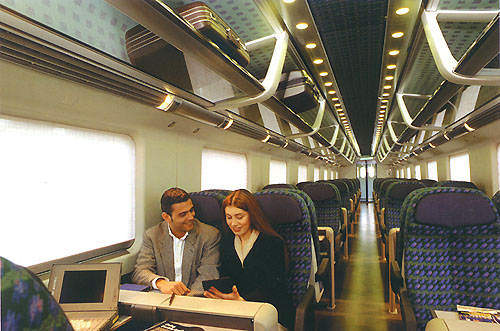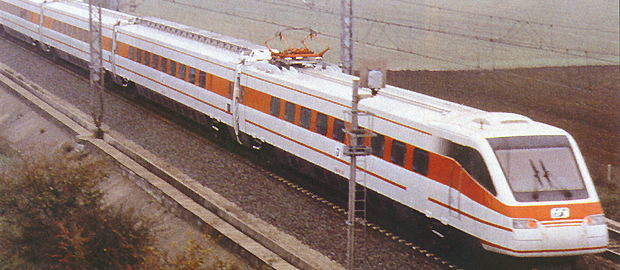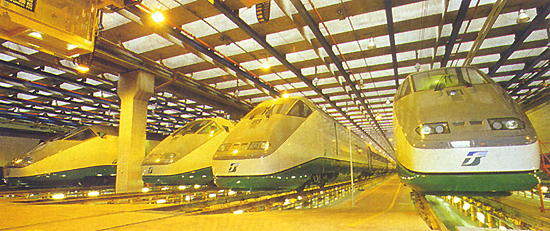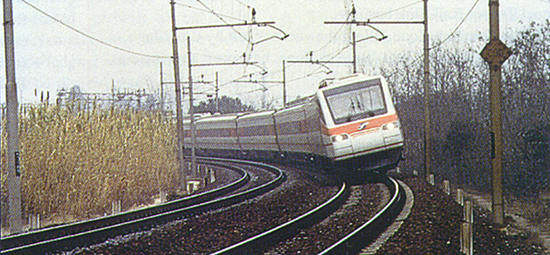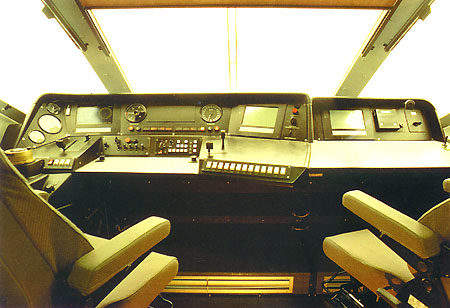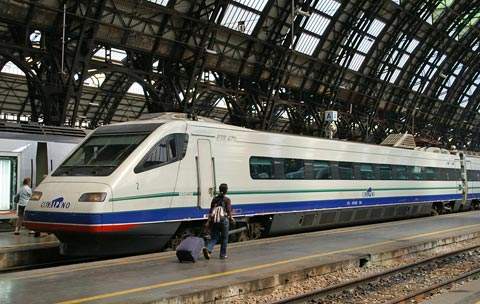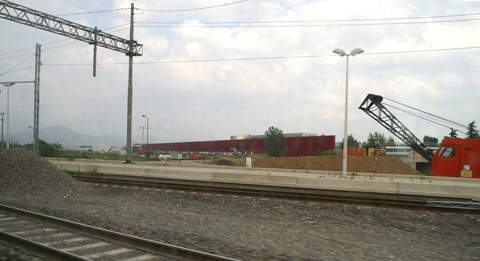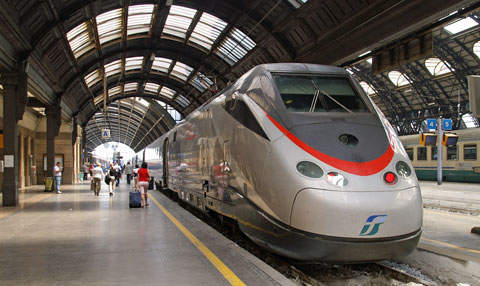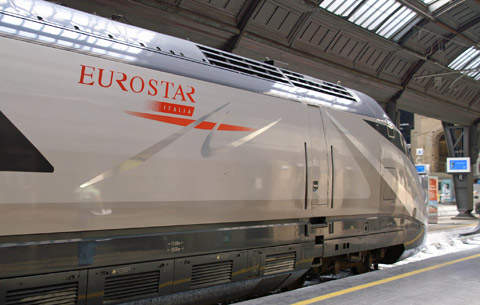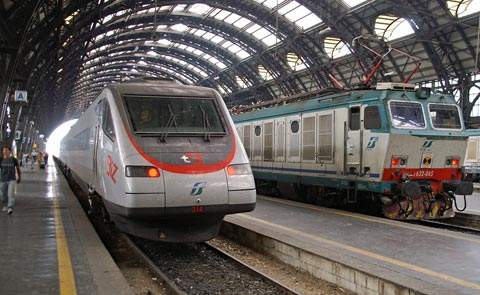Italy was a European pioneer in high-speed rail and the original home of the ‘Pendolino’ family of tilting trains that have been widely adopted in several countries to make the best use of conventional, as opposed to purpose-built high-speed, tracks.
In spite of economic fluctuations, high levels of vehicle ownership, a well-developed road system and a challenging terrain, the Italian high-speed rail network has been evolving for many years, with several lines in various stages of development.
Principal train operator under the public sector Ferrovie dello Stato (FS) umbrella is Trenitalia, which has been operator since 2000. State bodies have created the prevailing system, although, with an equipment order announced in January 2008, Italy seems set to establish a European first in the operation of high-speed trains.
The project
The overall high-speed rail project aims to liberate passenger travel from the constraints of a comprehensive but congested and relatively slow existing FS network. As with most such ventures, this has become influenced with environmental aspects such as reducing reliance upon road transport and providing a realistic alternative to domestic flights, these having proliferated under deregulation, especially along Italy’s long north-south axis.
The Italian high-speed era began with the 252km (157-mile) Rome-Florence ‘Direttissima’, the first dedicated high-speed line in Europe when opened in 1978.
However, with a decision to change the system from the Italian electrification standard of 3,000V DC and go for higher speeds, this pioneering line has required heavy upgrading for 300km/h (186mph) operation.
For a final 20km approach to Naples, high-speed trains were diverted away from the classic Rome-Naples route from December 2005 to an all-new high-speed line. It reduced journey times between these cities to around one hour and was the country’s first to be energised at the European standard 25kV AC for high-speed lines. In early 2006 the western section of high-speed line between the key northern cities of Turin and Milan opened.
Infrastructure
Italian rail infrastructure is under the care of state body Rete Ferroviaria Italiana (RFI), of which is Treno Alta Velocitô SpA (TAV). This body is specifically for creating the high-speed network, with the new lines sometimes referred to as ‘TAV’ (Alta Velocitô designation also appears in some Trenitalia branding).
TAV has core routes under some stage of development. North-south: Milan-Bologna-Florence-Rome and east-west: Novara-Milan-Verona-Venice-Trieste. Florence-Bologna is due to open in 2008 and from that December, Milan and Bologna are due to gain a 60min service.
It is projected that by 2009 continuous ‘TAV’ will be available from Turin to Salerno, around 60km south of Naples. Further works include Milan-Genoa and extensions in the far south of Italy, although the projected Strait of Messina Bridge to Sicily that would have included rail tracks was abandoned in 2006.
The Italian high-speed lines will gain better connection with the evolving European network, with completion of the new Turin-Lyon line that includes a 52km base tunnel beneath the Alps.
Although for mixed traffic use, the line will greatly accelerate passenger services relative to the current routing.
Rolling stock
The high-speed fleet are in two broad categories, non-tilting and tilting. There are several tilting variants deriving from the pioneering work of FIAT Ferroviaria. These were a response to a need to increase speeds over necessarily sinuous routes of the original network that had to contend with many lines that linked coastal settlements, plus penetrating the mountains of the Alpine system to the north and the Apennines along the country’s spine.
The first generation of high-speed stock was the tilting ETR450 Pendolino, built by Fiat Ferroviaria, followed by the ETR460 single voltage EMU, the tri-voltage ETR470 for Cisalpino services to France, Switzerland and Germany and the dual-voltage (3kV DC/25kV AC) ETR480. The latter was developed with high-speed lines in mind, although its tilt capability is used to best advantage on classic lines with frequent curves, such as the coastal Genoa-Rome line.
The product of a consortium of manufacturers, the non-tilting ETR500 was designed for operation on the new high-speed lines, although as per European model for sets such as ICE and TGV, it is also compatible with conventional lines.
The 60-strong fleet entered squadron service during 2000, forming the basis of the ‘Italia Eurostar’ branded premium service linking the country’s major cities. The second batch of ETR500s features dual-voltage power cars (3kV DC / 25kV AC) for operation on 25kV AC high-speed lines.
High-speed operations have become synonymous with the Eurostar Italia brand, now modified to Eurostar Italia Alta Velocitô branding for services specifically over high-speed lines. The use of the Eurostar name predates its application for Paris-Brussels-London services and the operations are not connected. Class ETR485 are used for the business-targeted T-Biz service taking 4h5min between Milan and Rome with one intermediate stop at Bologna.
Signalling and communications
ETR500s are fitted with automatic train control and protection systems. However, the ETR460-480 run on conventional absolute block signalling, with in-cab warning system. It is planned that Naples-Rome will use signalling to the highest specification, Level 2 ERTMS.
The train crew are in constant contact with control centre staff and there is two-way communication between driver, guard and other train crew.
SIPAX (Systema Informativo Passaggeri), an integrated ticketing and reservation system, which includes associated operators, such as car hire, ferry, hotel and airline companies, has also been introduced.
Trenitalia offers several versions of ticketless travel options for many of its brands, including the high-speed Eurostar and T-Biz, also Intercity and Cisalpino over domestic sectors.
The future
In January 2008, Alstom announced that it had been chosen to supply private company Nuovo Trasporto Viaggiatori (NTV) with 25 new 11-car AGV (Automotrice Grande Vitesse; with distributed power, unlike ETR500) high-speed train sets for use on the Italian network.
The €650m order is for an initial three-route service featuring 300km/h running due to begin in 2011. NTV should therefore become the world’s first private sector operator in high-speed rail. A separate 30-year maintenance contract with Alstom will cover the fleet, which may extend by another ten sets.

